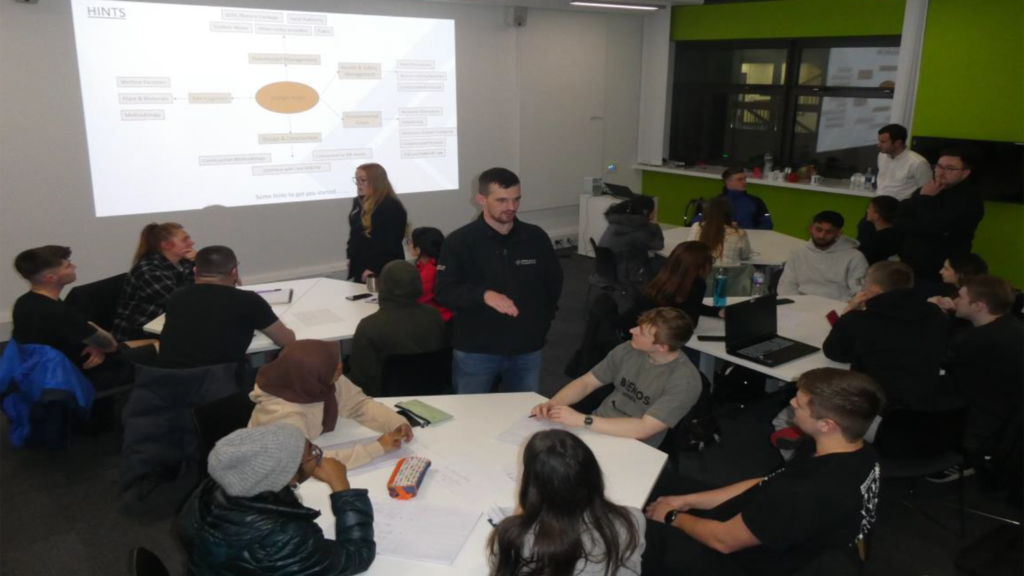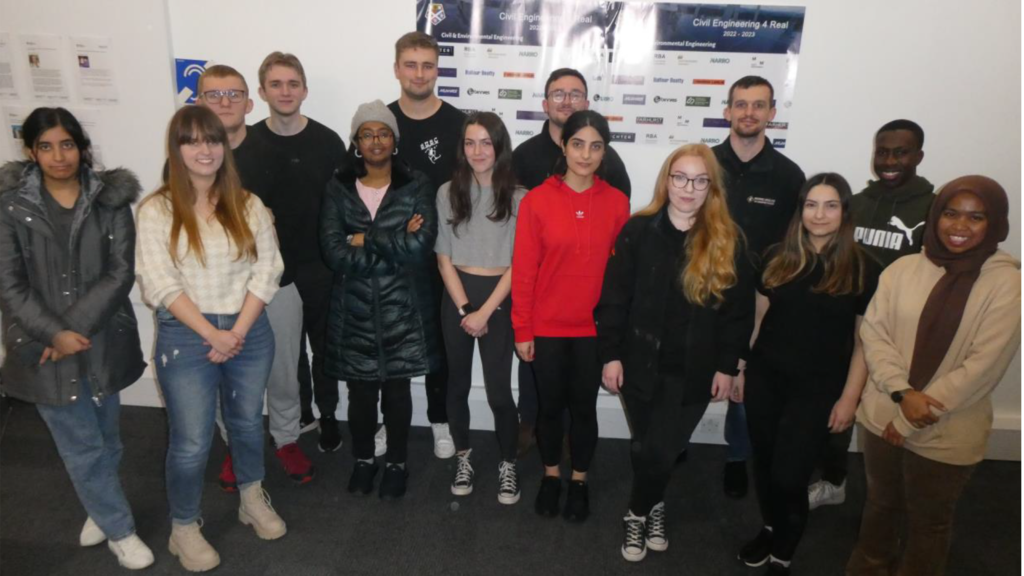University of Strathclyde Department of Civil & Environmental Engineering students attended a workshop delivered by George Leslie Agents last week.
George Leslie’s assistance helps the University of Strathclyde department meet the requirements of the Joint Board of Moderators (JBM) who are the organisation responsible for accrediting civil engineering courses in the U.K.
The Civil & Environmental Engineering students were given a project to design based upon a real-life project our Agents delivered for clients. The students were given the project details, reports, and all relevant scientific data before splitting into groups to design the project themselves.
The students learned about the on-Site Construction Challenges in Sewer Pipeline Projects and the various approaches that modern engineers may take to resolving them. What students found particularly interesting was the threat of UXO’s being buried in the area potentially making the works dangerous.
It was the Pumping station taking sludge to Erskine project that was given as an exercise. The original pipe was 250mm and only 20 years old with a 50-year design life. It was failing at the crown due to acid. This acid degrades concrete and the steel that the previous pipes were made from.
A solution to this was plastic piping. However plastic pipes are susceptible to deformation at high temperatures meaning that they must be protected from sunlight. This can be done by ordering the pipes in batches so that none is lying around or organising a storage facility. The pipe kept bursting at the same location. 4.5 km sludge main replacement. The new pipe was 350mm OD PE100 SDR11 16 bar. The environment was grass land and an SSI and RAMSAR site, through Erskine WTW, migrating birds and birds’ nests could be present in the area and the works are overlapping with nature walks. UXO bomb risks meant that drilling was slow and stressful for all staff.

George Leslie Sub Agents Megan S, Callum J. along with Graduate Engineer David D. with the class
Design describes a process of imagination and creativity that applies to all engineering activities, whether the requirement is to produce an artefact, a process, or a conceptual framework. The Climate Emergency requires graduates to exploit their imagination and creativity, ever mindful that past approaches to design were, put simply,
unsustainable.
This is what the Engineering Students thought of the day:
“I thoroughly enjoyed the CE4R from Megan + colleagues from George Leslie. It was great to see the project from both a consultant and contracting point of view and how they worked together. Looking at the Erskine Sludge Sewer it was interesting be able to see a live project with topics currently being studied like wastewater, being applied in real life practices.”
“As well as having two topics like drainage/wastewater and geotechnics being connected which in studies don’t often overlap. Seeing the effect soil can have on excavations can change the need for sheet piles, depth of piles, and trench box propping linked to ICE Attribute 1.”
“Trying to figure out the most effective ways of carrying out these, where ops were placed and how pipes were put together. Then being able to compare our groups ideas on issues & solutions was great to then see what was done in the project. I enjoyed hearing parts of the projects less focused on technical engineering aspects such as stakeholders and those who are affected by the construction works, in this case the landowner.”
“Working with different year groups gave an opportunity to hear different points of views from others as well as being clear to communicate to others with varying knowledge on particular topics relating to ICE Attribute 6.”
The JBM believes that, in the same way that professional experience can enrich a student’s learning, degree courses can benefit from engagement with the civil engineering profession. For this reason, the JBM strongly recommends that higher education institutions (HEIs) maintain strong, viable and visible links with the civil engineering profession

